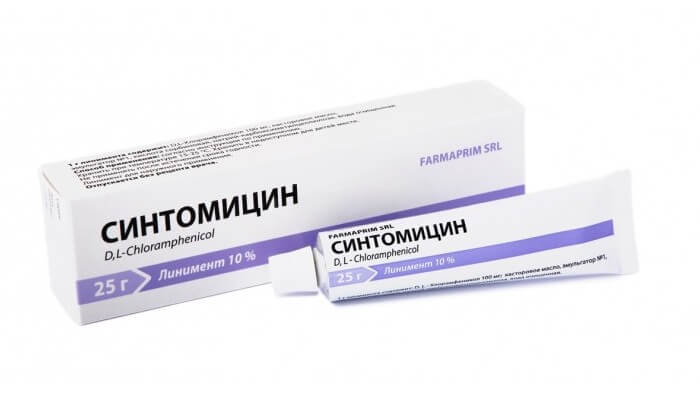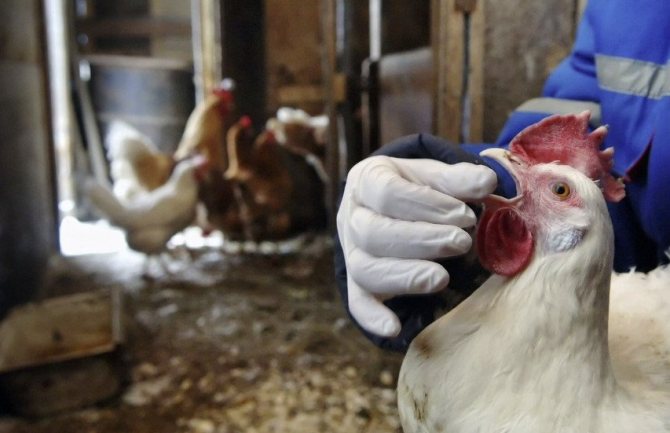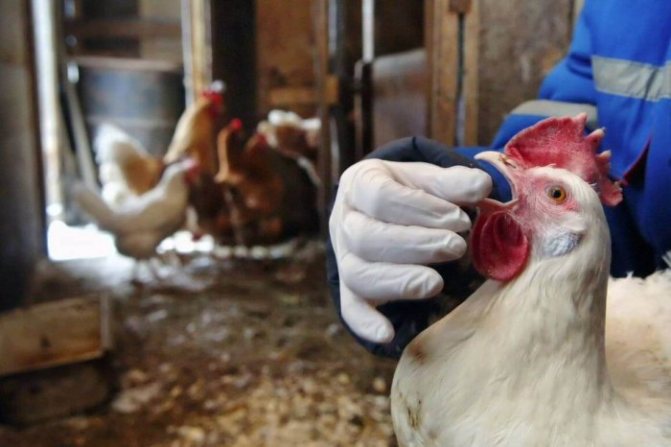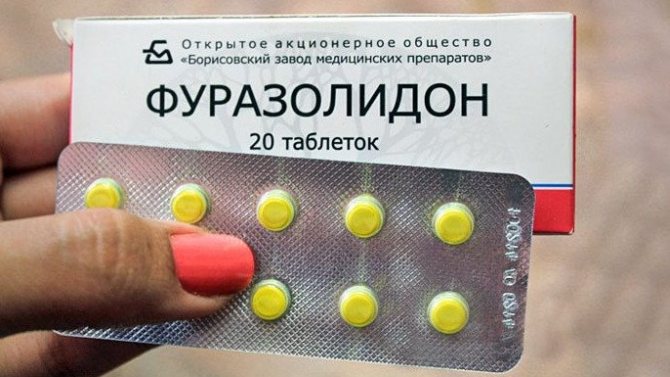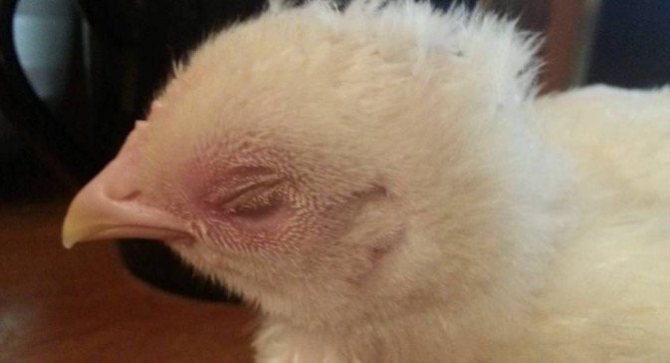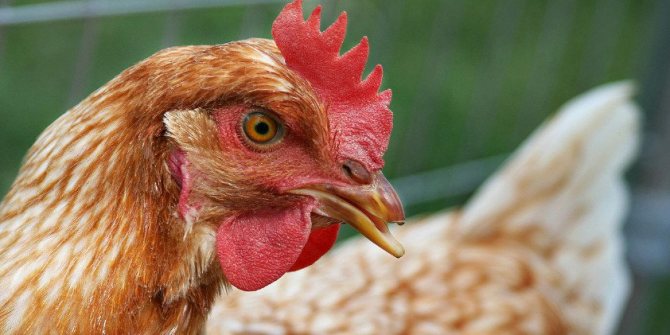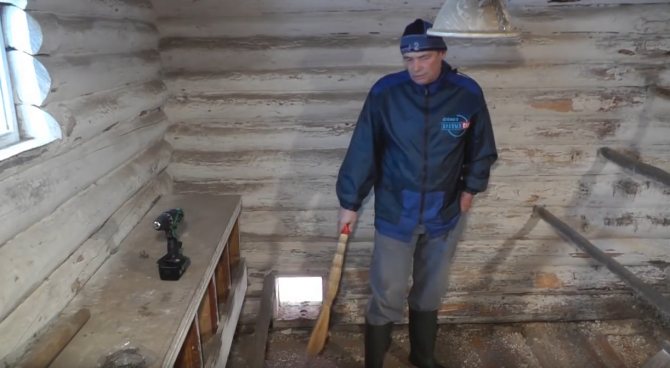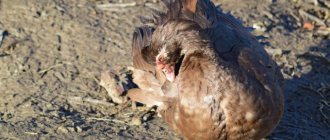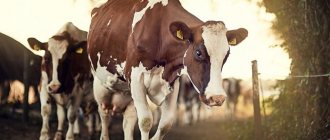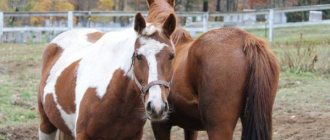463
no comments yet
1
The author of the article
Sadchikov Nikolay Alekseevich
Reading time: 4 minutes

Some diseases of chickens are accompanied by wheezing and sneezing. Wheezing is manifested in a bird in the form of shortness of breath, accompanied by snoring sounds and gurgling. After a while, chickens begin to sneeze, freeing the respiratory organs from mucus.
With the appearance of the first symptoms, it is necessary to diagnose the disease in order to avoid its spread to all livestock.
What is wheezing in chickens?
The presence of wheezing is a sign of the development of the disease, because such symptoms do not appear in healthy individuals. If left unaddressed, birds can die quickly and infect an entire herd.
It is quite simple to determine such symptoms - wheezing is characterized by breathing difficulties and you can notice them in chickens simply by going into the chicken coop and standing in silence for a while. If the chickens are in the poultry house, it is easier to identify wheezing, and when keeping birds on the run, it is not always possible to notice these signs in time, which allows the disease to progress, so the farmer must check the status of the livestock daily.
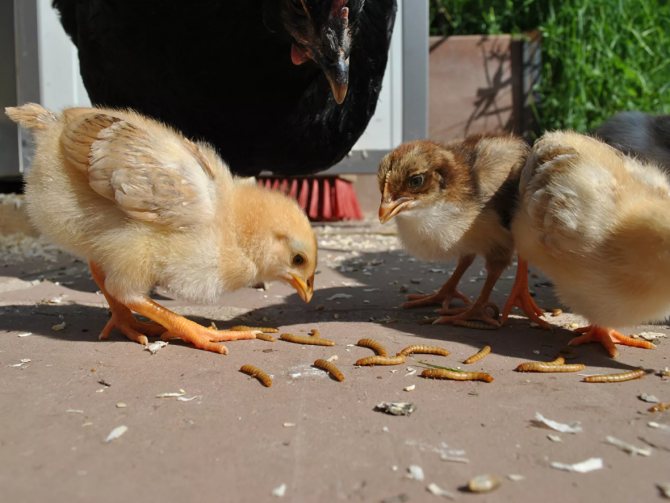

Young animals are most often susceptible to various infections.
An important point! Wheezing is the heavy breathing of birds, accompanied by sounds similar to snoring or squelching of water. If at least one bird makes such sounds, this is a reason to be wary.
The following reasons precede the manifestation of symptoms:
- colds;
- bronchitis;
- bronchopneumonia;
- various infections.
These signs are more clearly noticeable in roosters, because their loud singing voice quickly becomes hoarse. The reasons why chickens and roosters can wheeze, we have indicated below.


The wheezing of roosters is easier to hear
Why chickens wheeze and how to treat
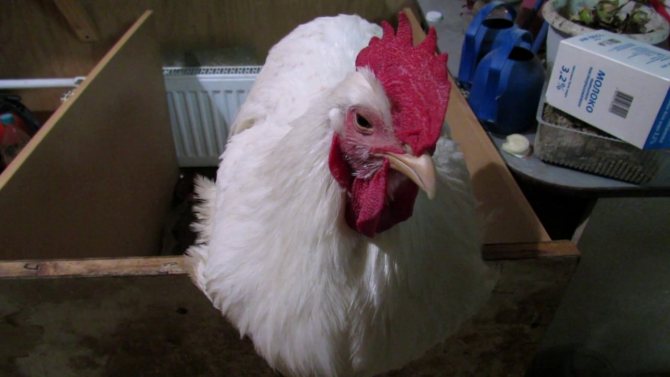

When the question "Why do chickens wheeze?" things are bad - the disease has already hit the chickens. An urgent need to take action, since such a symptom is a symptom of several rather serious diseases and can threaten the death of the entire flock.
Since the cause can be different types of diseases, therefore, it is not worth treating without the advice of a veterinarian. But in order to navigate the situation, the most common causes of wheezing in chickens are listed below.
Important! Wheezing - heavy breathing, accompanied by rattling, snoring sounds, gurgling. Wheezing is usually divided into wet and dry.
The most likely diseases for which wheezing can occur in chickens:
- cold;
- mycoplasmosis;
- infectious bronchitis;
- bronchopneumonia;
- colibacteriosis;
- aspergellosis;
- laryngotracheitis;
- tuberculosis;
- rhinotracheitis.
Helpful! It is convenient to assess the health of the chicken flock by the state of the rooster. He has symptoms of the disease before anyone else, which makes it possible to quickly begin to treat and take preventive measures. He cannot sing because of his hoarseness, muffled voice.
Colds
In the cold season, the body of poultry is more vulnerable to various diseases.The main reason for this problem is hypothermia, which can occur as a result of prolonged walking in the cold. In addition, drafts, damp bedding and low indoor temperatures can cause birds to catch cold.
A cold is characterized by the following symptoms:
- coughing;
- high body temperature (in severe cases);
- discharge of mucus from the nasal cavity;
- lack of appetite;
- cloudy iris of the eyes;
Sick birds become sedentary - they can sit in one place all day. It is this behavior that should alert the farmer.
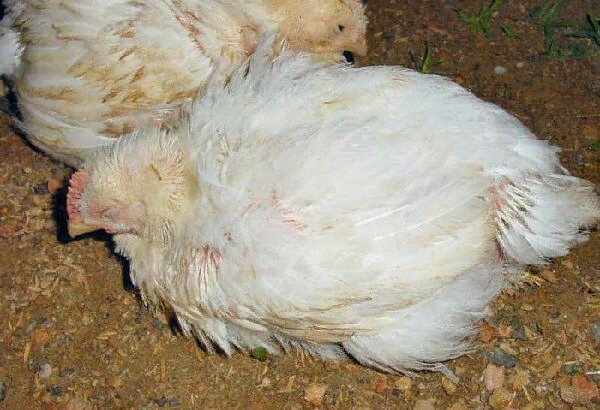

A cold in chickens develops with severe hypothermia.
Treatment
At the first signs of a cold, it is advisable to contact your veterinarian. However, to help the birds quickly, you can do the following:
- Place sick individuals in a separate room to exclude any contact with healthy livestock.
- Provide air temperature for chickens at least 15 degrees. In the cold season, poultry houses are equipped with heaters.
- Instead of ordinary water, a warm decoction of nettle should be poured into the drinker - it has a strong anti-inflammatory effect.
- Sick birds require enhanced nutrition with the addition of premixes.
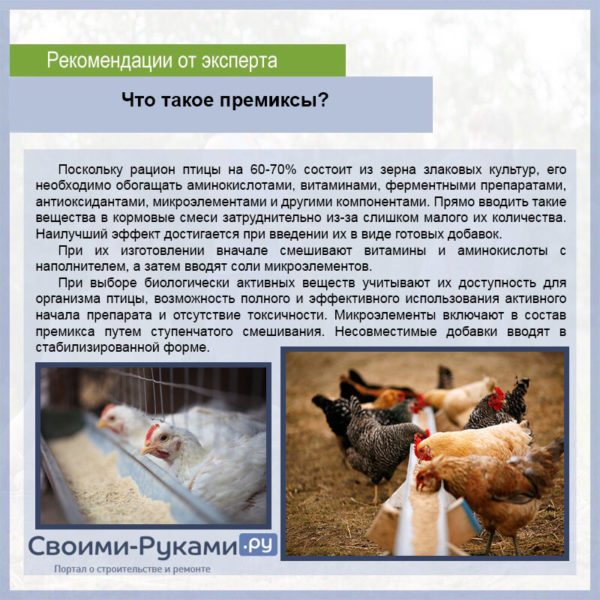

Treatment should be continued even if, after a few days, wheezing begins to dull. This will prevent the disease from progressing again.
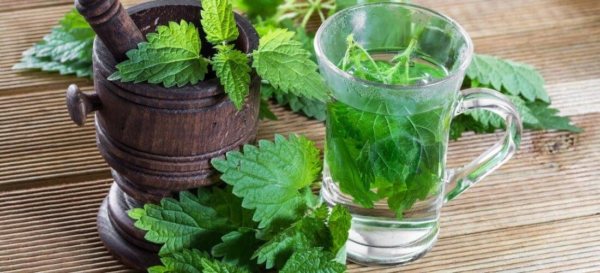

A decoction of nettle helps relieve symptoms of the inflammatory process
Cold
This is one of the most common diseases in domestic chickens. It affects both adult birds and chickens. The disease itself is not fatal, but gives serious complications. It is especially dangerous for young animals.
Symptoms of a cold are wheezing, coughing, bubbling in the bird's chest, discoloration of the scallop, discharge of clear mucus from the nasal passages, open beak, sneezing, lethargy and apathy, and lack of appetite.
For the treatment of colds in domestic chickens, veterinarians recommend using biomycin, oxytetracycline, streptomycin sulfate, tiamulin, or erythromycin.
Infectious bronchitis (IBC)
Infectious bronchitis is rapidly spreading among the entire livestock - it is a contagious disease. The disease affects the respiratory system of birds of all ages, but it poses a particular danger to the health of young individuals - for them IBV can be fatal.
Quite often, signs of the disease occur in the entire livestock when kept too close, because the infection is transmitted among chickens by airborne droplets. In addition, the disease is greatly complicated by the presence of other concomitant infections.
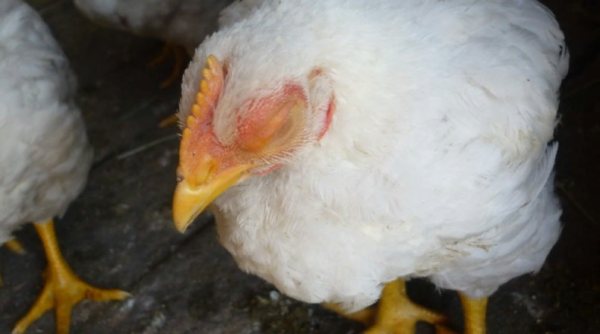

Sick birds get weak
Chickens of any breed are susceptible to this disease. In some cases, newborn chickens are already carriers of the infection, this happens when eggs from sick individuals are used for incubation, because this virus develops rather quickly in the embryo.
Chicks that carry IBV usually die a few days after hatching, but in some cases they grow weak and lag behind in development. Their further productivity may be under threat. Recovered birds are also carriers of the infection for about 3 months. They spread the virus through waste products and saliva, so they should be kept separate from the rest of the livestock.
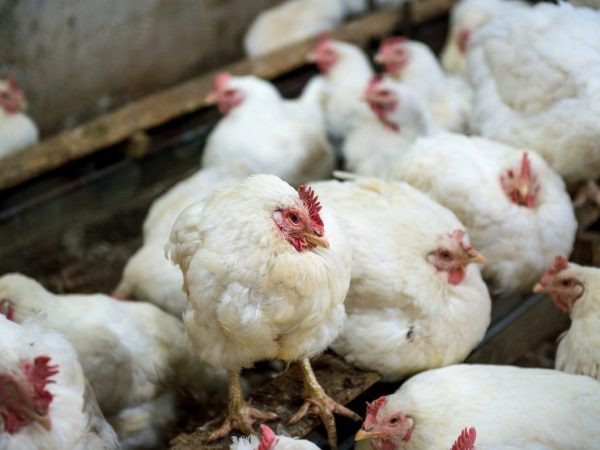

If birds live in close quarters, bronchitis will instantly affect all livestock.
In all cases, infectious bronchitis is accompanied by severe coughing, sneezing, wheezing, discharge from the new cavity and eyes. But it is usually customary to separate the symptoms in adults and young animals.
Table 1. Features of symptoms in adult chickens and chickens
| Adults | Chickens |
| 1. Heavy breathing, wheezing and wheezing in the lungs. 2. Decrease in egg production.Eggs obtained from sick chickens have shells that are too soft. 3. There is diarrhea with green discharge. 4. Individuals become restless. 5. After opening, bruises in the bronchi are found. | 1. Damage to the mucous membranes of the eyes, signs of conjunctivitis. 2. Severe puffiness under the eyes. 3. Rapid weight loss due to lack of appetite. 4. Sometimes there is a curvature of the neck. |
An important point! The disease causes serious damage to the farm precisely because of the decrease in the egg production of individuals. It will be quite difficult to restore productivity to recovered birds.
Treatment
Methods for dealing with infectious bronchitis involve thorough disinfection of the poultry house. This treatment is carried out using lugol, aluminum iodide and other means. During treatment, it is important for birds to provide comfortable conditions, to exclude the possibility of hypothermia. But most often the disease is treated with broad-spectrum antibiotics - they are prescribed by a veterinarian.
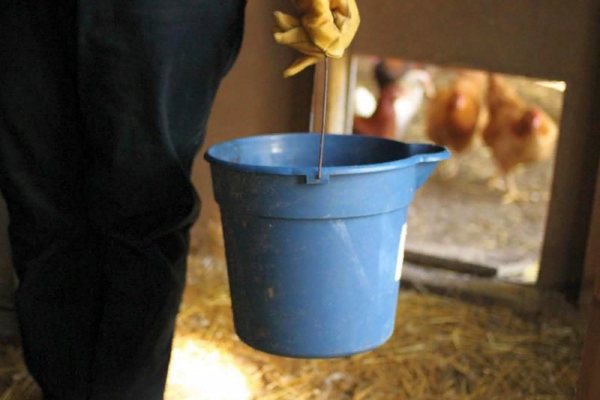

It is necessary to disinfect the poultry house where the sick individuals were
Bronchopneumonia
This disease is accompanied by severe inflammation of the bronchioles. A similar process is distinguished by a rapid lesion of the respiratory system - if untreated, the birds die after two days.
The following prerequisites for the development of bronchopneumonia are distinguished:
- infection of the respiratory tract with staphylococci, pneumococci;
- severe consequences of IBK;
- lack of body resistance to disease;
- poor conditions for keeping individuals, cold poultry house.
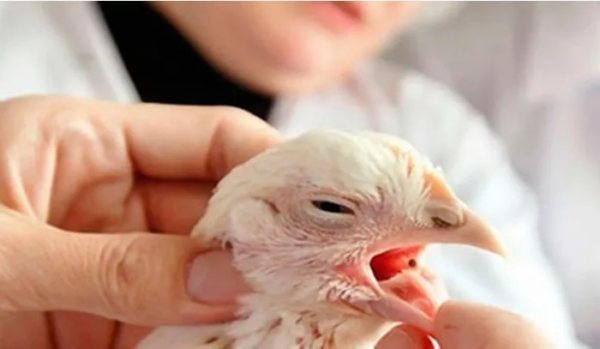

The disease is accompanied by a severe cough
The disease provokes the following symptoms:
- rapid weight loss;
- birds lower their heads, prefer to stay in one place, practically do not move;
- individuals breathe heavily, while wheezing can be clearly heard;
- mucus is secreted from the nasal cavity and eyes.
Complex diagnostic measures are not required for the diagnosis. Basically, bronchopneumonia is determined by characteristic symptoms, sometimes the disease is confirmed using a bioassay.
Treatment
At the first stage of treatment, a mandatory disinfection of the room in which the birds are kept is carried out. The walls, ceiling and floor are treated with a spray bottle with a solution of soda or bleach, formalin.
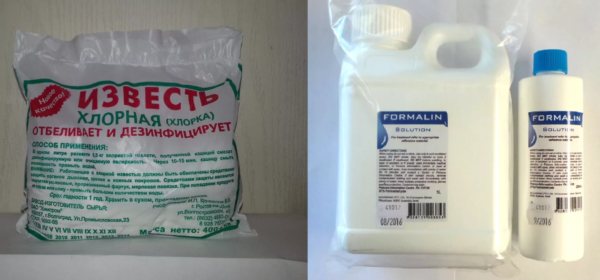

Bleach and formalin are often used in chicken coop treatments.
If a disease is detected in a severe form (leading to the death of chickens), sick individuals are placed in a separate poultry house and treated with antibiotics. To exclude the recurrence of symptoms, vitamins and minerals are added to the feed to maintain immunity.
Mycoplasmosis
Most often, pathogens enter the respiratory tract of birds with contaminated water and food - this happens when hygiene in the poultry house is violated. Both adult chickens and chickens are affected.
The disease is characterized by the following symptoms:
- In young animals, severe shortness of breath occurs, the appearance of frothy nasal discharge is observed. As a result of this process, chicks often lag behind in development.
- In adult chickens, the disease has an extremely negative effect on the entire reproductive system, due to which egg production decreases several times, the eggshell becomes soft. Inflammation of the mucous membrane of the eyes is also observed.


There is discharge from the eyes
It is by such signs that the presence of the disease can be determined, but in some cases the diagnosis is carried out by a PCR reaction.
Treatment
For chickens with mycoplasmosis, antibiotic therapy is mandatory. Veterinarians usually prescribe the following drugs: "Farmazin", "Spiramycin", "Streptomycin" and other analogues. It is impossible to get rid of mycoplasmosis using folk methods.However, some farmers believe that the use of goat's milk, added to chicken feed, can strengthen the immune system and reduce symptoms.
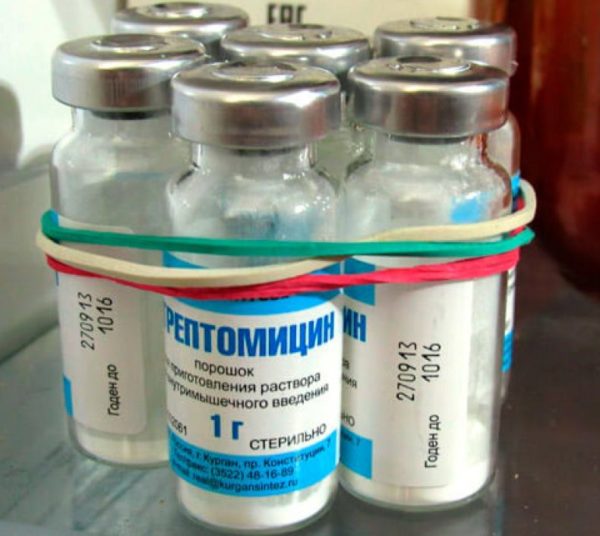

"Streptomycin"
Output:
Thus, we found out why chickens wheeze. How to treat a cough? The answer to this question depends on the specific disease.
If such symptoms appear due to a cold, it will be easy to help the bird on your own. For other illnesses associated with coughing and sneezing, the farmer should, of course, seek the help of a veterinarian.
Even the most experienced and responsible farmers are unable to prevent chickens from getting sick - in practice, it is impossible to protect the farm from this. Therefore, any poultry enterprise or farm is not insured against unplanned, sometimes huge financial losses. After all, poultry, along with other animals, does not have strong immunity and suffers from many infections, from which it cannot be completely protected. In this article, we will consider in detail the question: why chickens wheeze and how to deal with it.
Respiratory tract infection
This disease occurs due to the violation of the keeping of birds in the chicken coop, and the infection of the individual is obtained by eating contaminated feed.
Pathology is characterized by the following symptoms:
- At the very beginning of the development of the process, dry wheezing and coughing appear. As the disease progresses, the wheezing becomes moist.
- Sick birds look emaciated, refuse food.
- Severe forms of the disease are accompanied by the appearance of seizures and paralysis of the limbs.
To identify such a disease, laboratory diagnostics are often required, so you will have to call a veterinarian at the poultry farm.
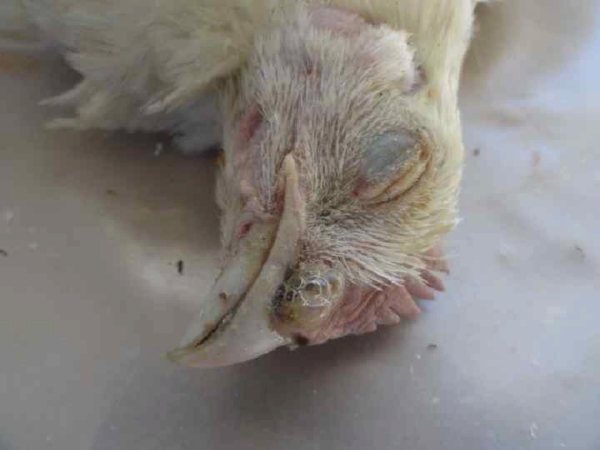

In the absence of treatment, the death of the bird occurs
Treatment
The disease is provoked by E. coli, therefore, treatment includes antibiotic therapy with drugs, the active ingredients of which are aminopenicillins and chloramphenicol.
Aspergellosis
The development of aspergellosis is provoked by fungi that penetrate the respiratory system of individuals. Birds get infected after eating poor quality feed. In addition, increased humidity in the house contributes to the spread of fungi.
The most common symptoms are:
- heavy breathing, wheezing;
- general weakness;
- loss of productivity.
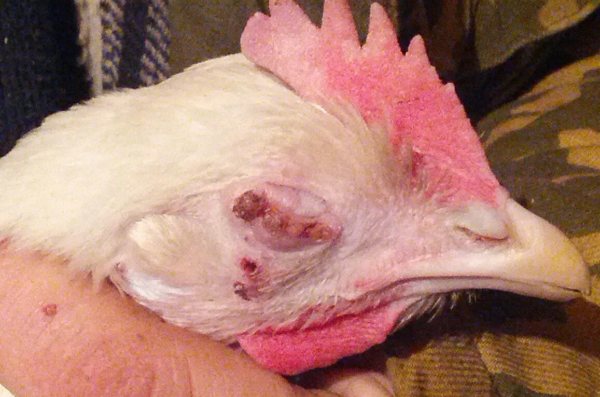

Manifestation of a fungal disease
In case of untimely detection of the disease, the death of a bird occurs in 80% of cases. However, sick individuals do not pose a danger to other chickens, because the disease is not transmitted by airborne droplets.
Treatment
Treatment involves the use of various antifungal agents such as Nystatin. Also, individuals are given a solution based on iodine and water for several days. To improve immunity, it is recommended to saturate feed for chickens with special vitamin supplements.
Tuberculosis
Tuberculosis can affect all poultry, regardless of gender and age.
Expert opinion
Sadchikov Nikolay Alekseevich
Ornithologist veterinarian
Ask a Question
Affected individuals show weakness, intestinal upset, wheezing, sneezing and coughing, fever, pale crest, weight loss, paralysis of the legs. The disease is characterized by a high lethal outcome. Can be transmitted to humans.
No drugs have been developed for the treatment of poultry tuberculosis.
Features of antibiotic treatment
In the treatment of some severe pathologies of the respiratory system in birds, antibiotics have to be used. The usual course of treatment is 5-7 days, depending on the severity of the symptoms.


Antibiotics are added to feed mixtures
Antibiotic therapy has its own characteristics:
- Even if only one bird is diagnosed with the disease in the entire population, general preventive treatment will be required.The antibiotic is added to bird feed at the rate of 200 grams per ton.
- If it is necessary to carry out intensive treatment, the drug is diluted with water and instilled into the individuals in the beak from a pipette.
- The use of this or that remedy also depends on the breed of bird. For example, broiler chickens are given Baytril as a preventive measure already on the third day after hatching.
Read more about Baytril for chickens in special article.
After the birds have been treated with antibiotics, they are allowed to be sent for slaughter only after 14 days, because medicines accumulate in the meat.
Disease prevention measures
Most diseases in chickens are caused by deficiencies in care, therefore, the primary task of the farmer is to carefully monitor the cleanliness of the premises and the condition of the poultry.
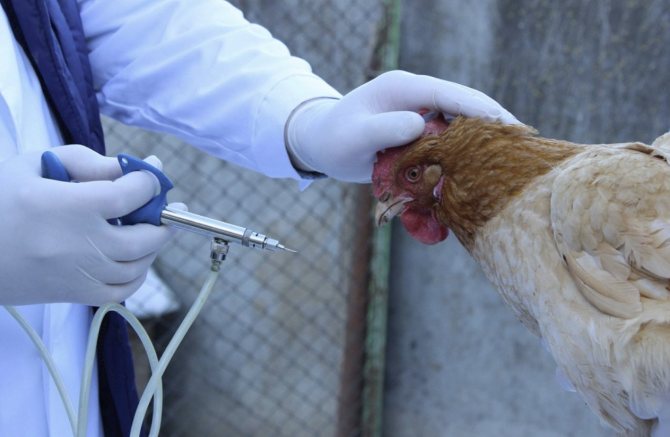

Preventive measures include:
- Vaccination against rhinotracheitis at one day of age with the live vaccine Pulvac TRT. Depending on the epidemiological situation in the region, it can be carried out 3-4 times a year.
- Vaccination against mycoplasmosis of an adult population 120 days before hatching.
- Introduction of fortified premixes taking into account age.
- Carrying out deworming 2 times a year.
- Insulation of the walls of the chicken coop.
- Regular change of floor mat and disinfection of premises.
- Tracking the epidemiological situation in the region and timely vaccination.
Sneezing, coughing and wheezing in chickens provoke viral diseases and E. coli. Most of them are untreated. The main measure of protection against them is high-quality prevention and control of conditions of detention.
Preventive measures
Compliance with some preventive recommendations will help prevent the development of various pathologies of the respiratory system in birds:
- It will be necessary to maintain a microclimate that is comfortable for the health of individuals in the poultry house. Therefore, the air humidity when keeping adult chickens should not exceed 50%, and when keeping young hens - 70%. Excess moisture leads to the spread of fungi and the development of a dangerous disease.
- The temperature at which the individuals are kept is also of great importance - the optimal indicator is from 15 to 25 degrees.


Adults do well at twenty degrees - It is important to compose a balanced menu for birds so that all useful trace elements are present in the diet. During the period of illness, it is especially recommended to add special vitamin and immunomodulating premixes to the feed.
- It is advisable to vaccinate the livestock against certain diseases - even in case of epidemics, vaccinated birds will much more easily transfer the disease.
- The room where the birds live will need to be disinfected every 12 months. It is necessary to thoroughly treat nests, perches, drinkers with an antiseptic solution; it will be necessary to completely replace the litter.
- Experts do not recommend keeping chickens of different ages in the same poultry house. These precautions will help prevent the spread of dangerous infections. In addition, the young need to provide more comfortable conditions.
- To feed the livestock, you should purchase only high-quality compound feed. It is necessary to require appropriate certificates from sellers and check expiration dates.
Even after eliminating infections, the farm must be quarantined for some time. Therefore, during such a period, it is not allowed to take out poultry for the purpose of sale outside the territory.
Table 2. Instructions for disinfection of the poultry house
| Illustration | Description |
| Step one: remove all external contamination, carefully sweep the nests, the space under the perches. |
| Step two: remove the remaining droppings with a spatula. |
| Step three: we dilute lime in water for further processing. |
| Step four: we process the walls, ceiling, floor with lime mortar. For prevention, you can scatter dry lime in the corners. |

